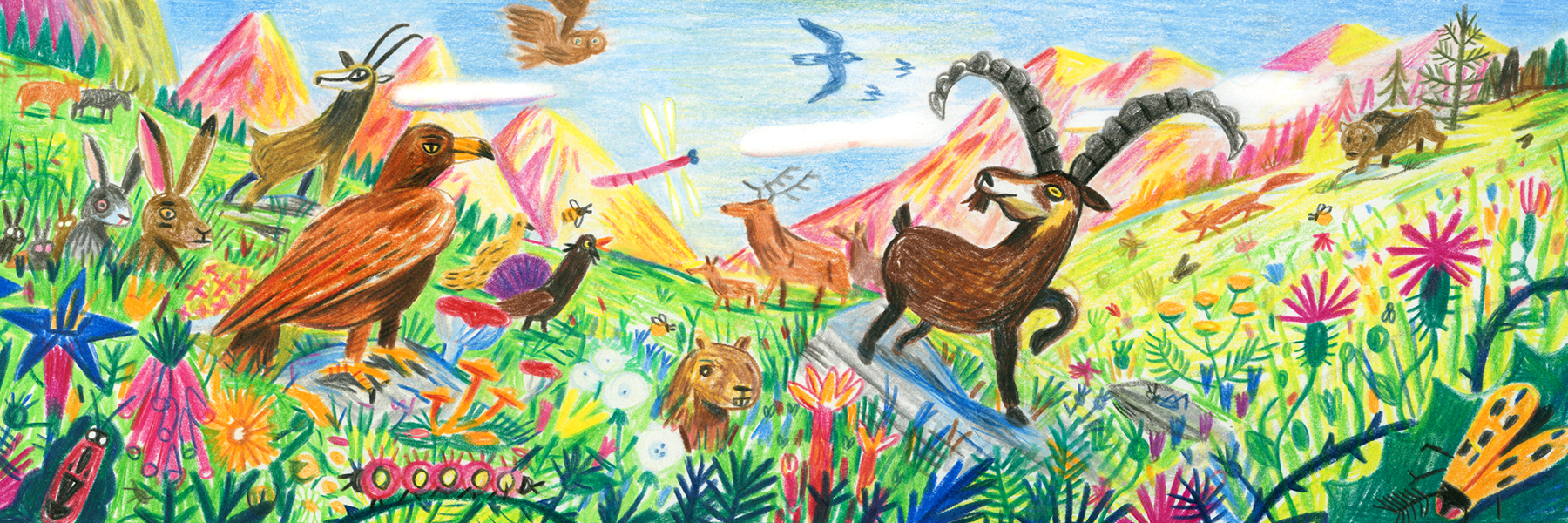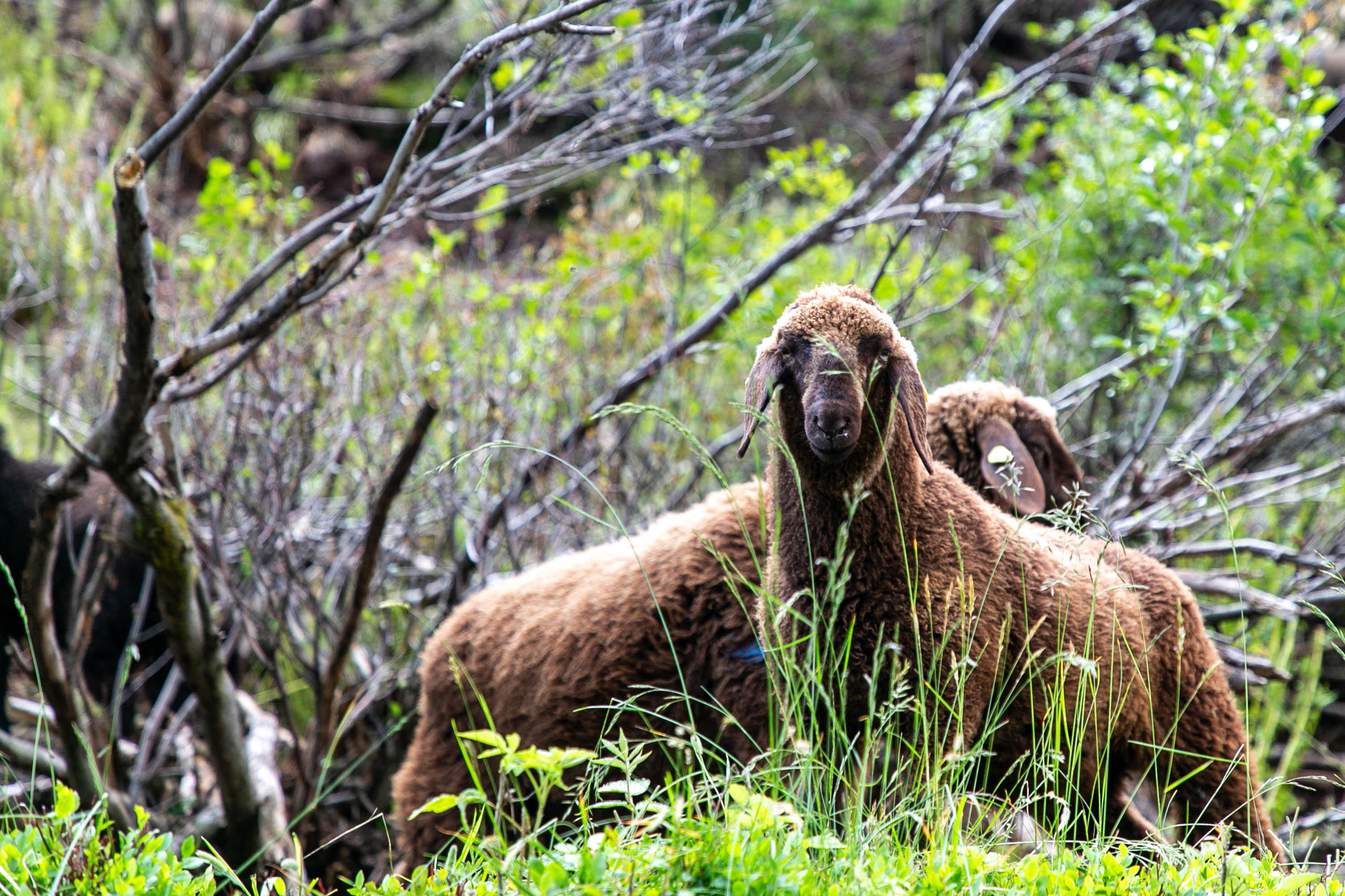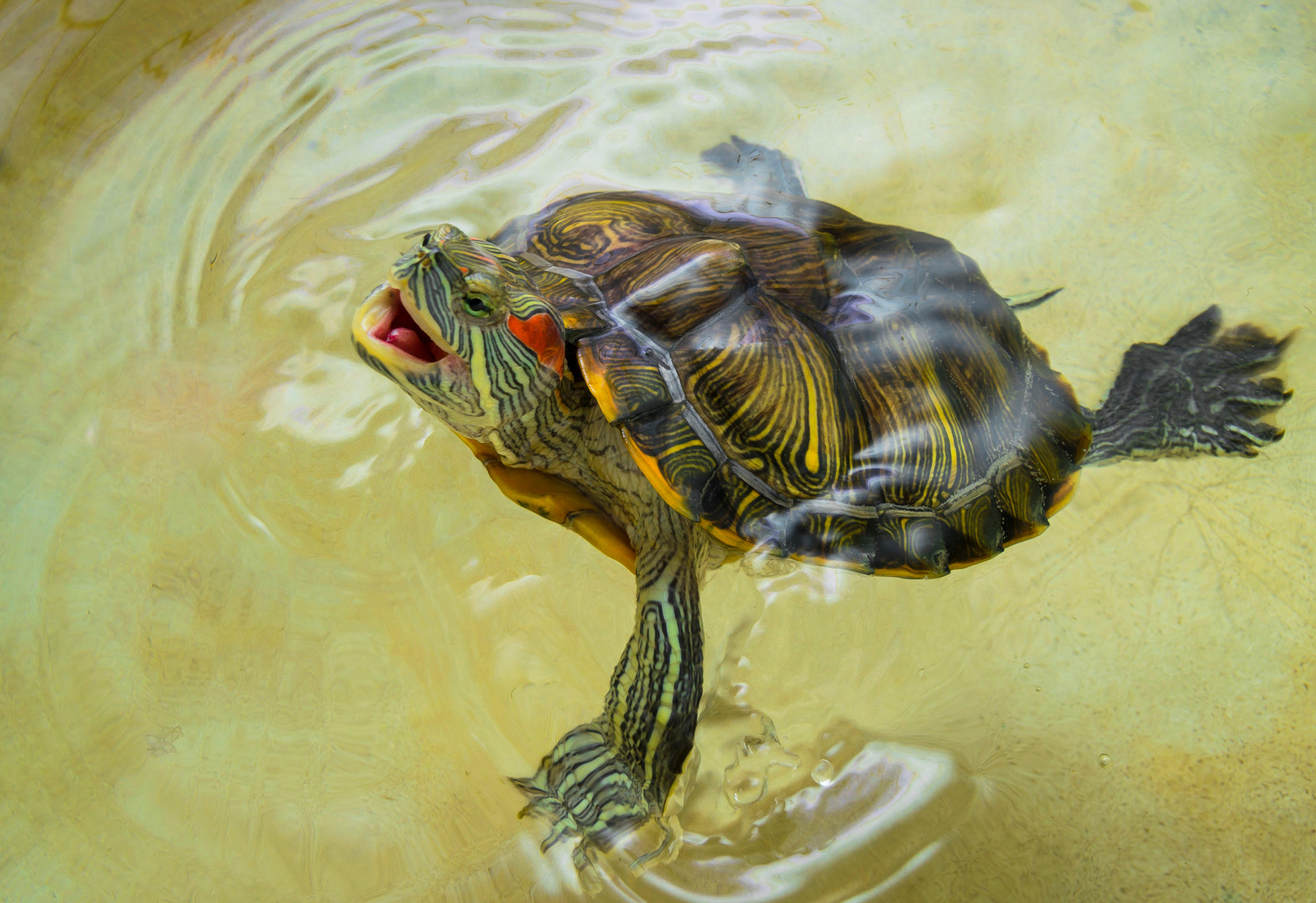Which invasive species are a problem where you live?
Many places in the world are coping with unwanted alien species, whether it’s shellfish, predatory mammals, or plants that spread like wildfire. What they have in common is their often harmful effects on native biodiversity.
Which invasive species are a problem where you live, and what is being done about it? On the other hand, are there any new plants or animals that you are happy to see?
From the article Lake invaders: alien shellfish trouble Swiss waters
Hi, I am Portuguese living in the outskirts of Aveiro.
Here what we have seen are foxes, an animal that we didn't expect to see. There are several testimonies from residents who own livestock, (where these appear dead,) that they have seen the fox near their homes. They suspect that these animals are killing the livestock, more specifically chickens and turkeys. It is worrying, because they also bring their young.
Olá, sou portuguesa a viver nos arredores de Aveiro.
Aqui o que se tem visto é raposas, um animal que não esperávamos ver. Há vários testemunhos de residentes q possuem gado, (onde estes aparecem mortos,) q já viram a raposa nas proximidades das suas residências. Suspeitam que sejam estes animais a matar o gado, mais propriamente galinhas e perus. É preocupante, pq eles tb trazem as crias.
In Spain there are several invasive species.
However, I would like to mention one that is very evident and can be seen in the cities: the
and can be seen in the cities:
The parrot or Argentine parrot.
En España hay diversas especies invasoras.
No obstante lo anterior quiero nombrar una que es muy evidente y se puede
contemplar en las ciudades:
El loro o cotorra argentino.
In Brazil the fauna is threatened by the invasion of: sun coral, wild boar, golden mussel, marmoset, and giant African snail. The Ministry of the Environment is working to control them by 2030.
In the flora scenario Brazil has many plants catalogued as exotic and other invasive, which can be accessed at: ibama.gov.br/ exotic- invasive-species.
No Brasil a fauna sofre ameaça de equilíbrio nacional com a invasão de : coral sol, javali, mexilhão dourado, sagui e caramujo gigante africano. O Ministério do Meio Ambiente trabalha para controlá-las até 2030.
No cenário da flora o Brasil muitas plantas catalogadas como exóticas e outras invasoras, que pode ser acessada na página: ibama.gov.br/ espécies- exoticas- invasoras.
Good evening, I hope you are well with the family, good entries to the new year, that is very healthy and successful.
Speaking on the topic of mussels being a threat to the waters of the river in your country, it is to be regretted because in my country they have already insisted but now it is very rare to find, because the same the population makes food, it is an edible product. And I believe I love only Africa that feeds on it, even Asia. I see a lot of ca in Africa buying it for export, not just for food, even in Mozaiko factories they use it as raw material.
Boa noite, espero que estejas bem junto à família, boa entradas ao ano novo, que seja de muito saúde e sucesso.
Falando no tema de mexilhões sendo uma ameaça para as águas do rio do vosso país, é de lamentar porque no meu país já insistiram mas agora é muito raro de encontrar, porque o mesmo a população faz de alimentos, é um produto comestível. E acredito amo só a África que se alimentam do mesmo, até a Ásia. Vejo muito ca na África a comprarem para exportação, não só para servir de alimento, mesmo nas fábricas de Mozaiko usam como matéria prima.
Invase species are ultimately caused by excessive human travel and by the global economy that keeps moving goods around the world for no real reason other than making money by some.
Economies that are more focused on creating local value will not only reduce travel, eliminate much of the emissions that are associated with global trade, but they will also reduce the risk that invasive species move around the world.
That could be a solution! But in my opinion the most logical solution is the introduction into the habitat of animal species that feed on the alien species that have been introduced to Switzerland.
Potrebbe essere una soluzione! Ma secondo me la soluzione più logica è l'introduzione nell'habitat di specie animali che si cibano delle specie aliene che sono state introdotte in Svizzera.
That's an interesting idea. But the ones that feed on the alien species might increase in size, numbers and appetite. And then we'd need more of the alien species. Makes me wonder whether it's such a good idea for people to start eating Asian clams...
In Portugal several species of acacias have been introduced. They are one of the biggest problems for the forest. Acacias, being leguminous, have a brutal advance in growth and leave no room for native plants - oaks, cork oaks, etc. Acacias are also a highly flammable fuel and are terrible in forest fires. Acacias benefit from fires, because their numerous seeds spread everywhere with the heat... Attempts are being made to control these invasive plants, but much more should be done with prevention.
Em Portugal foram introduzidas várias espécies de acácias. São um dos maiores problemas para a floresta. As acácias, sendo leguminosas, têm um avanço brutal no crescimento e não deixam lugar para as plantas autóctones - carvalhos, sobreiros etc. As acácias são também um combustível altamente inflamável e são terríveis nos incêndios florestais. As acácias beneficiam dos fogos, porque as suas inúmeras sementes espalham-se por toda a parte com a térmica... Estão sendo feitas tentativas de controle destas plantas invasoras, mas dever-se-ia apostar muito mais na prevenção.
Our urban gardens are often the site of introduction for invasive species - both native and exotic. Big box stores such as Jumbo sell all sorts of invasives for people''s garden and unless you are aware that something is invasive, you are lured by attractive flowers and fruits, unaware of what that introduces
In my location in Switzerland, Prunus laurocerasus, aka Kirschlorbeer is the king of invasive plants.
It is sold as an excellent hedging pant which it is. It grows quickly and it's very dense, offering excellent screening. BUT, it is highly invasive - spreading through its extensive root system as well as through its fruits which are loved by Amsel. It is all over our forests as well as open landscapes.
I have spent the better part of a year trying to remove it from my garden. Not an easy task as it's somewhat relentless in its determination but I too am determined. Stay tuned!!!
Sounds like you have quite a challenge in your garden! You might find this article interesting -- it features images of several problem plants: [url=https://www.swissinfo.ch/eng/sci-tech/invasive-species-in-switzerland-_foreign-elements-endangering-swiss-biodiversity/44978842]How Switzerland is battling invasive species[/url]
The larger challenge is it's not just my garden. If you go for a walk through the forests here in Luzern and elsewhere in Switzerland, you see Prunus laurocerasus growing everywhere. I cut off the fruits but they also aggressive vegetative spreaders.
Nurseries and big box stores should not be allowed to sell invasive plants. Until such time, what would be helpful is if they were required to label plants as invasives just as it would be helpful if they were required to label double flowered plants as not offering forage for pollinators as the human construction of the double flower confiscated the ovaries.
It does seem odd that there's awareness of the problem, yet no ban on sales -- or as you say, at least a warning label.
Travel much less even though prices are now rock-bottom, and reduce the global globalization of goods: as long as we behave like this, we will only be swamped by invasive species and there will be nothing to do at all.
Viaggiare molto meno anche se i prezzi sono ormai stracciati, e ridurre la globalizzazione mondiale delle merci: finché ci comporteremo così, saremo solo sommersi da specie invasive e non ci sarà proprio nulla da fare.
The problem is us as a species... between what we are doing to the earth, which climate change is screaming about, pesticides, etc... Nature does what it can with its adaptive processes to ALL this that WE generate. LET'S MAKE NO MISTAKE!
El problema somos nosotros como especie... entre lo que le estamos haciendo a la tierra que el cambio climático lo dice a gritos, los pesticidas, etc... La naturaleza hace lo que puede con sus procesos de adaptación a TODO esto que NOSOTROS generamos. NO NOS EQUIVOQUEMOS!
Really Lorena, but this species that was mentioned here is very complicated because it lives and reproduces inside the rocks. Pesticide I doubt to finish like that. Because we are also talking about a very sensitive place where they are found, in the water.
Realmente Lorena, mas nessa espécie que cá foi citada, é muito complicada porque ela vive e reproduzem se dentro das rochas, ambientalmente deve ser bem estudado para combater o mesmo. Pesticida duvido terminar como isso. Porque também estamos a falar de um lugar muito sensível onde eles se encontram, na água.
In Japan, wild animals imported as pets are expanding their habitats over a wide area. Raccoons, alligator snapping turtles, green turtles, etc. not only affect the biological environment, but also have an impact on crops. In the case of fisheries, the release of black bass into the wild as a sport fishery has certainly had an impact on endemic species. Without an international framework, the country will not do anything. Raccoons in particular have dangerous parasitic diseases.
日本では先ず、ペットとして輸入された野生動物が広範囲に渡って生息域を広げています。アライグマ、ワニガメ、ミドリガメ等生体環境に影響を与えるだけでなく農作物にも影響を与えてます。水産だとスポーツフィッシングとしてブラックバスの放流は確実に固有種に影響を与えていますね。国際的な枠組を作らなければ国は何も動く事はしないでしょう。特にアライグマなどは危険な寄生虫症を持っています。
Thank you for your comment. Raccoons and Florida turtles have also arrived in Switzerland.
In the Amazon there are caterpillars that devastate crops. Mainly coconut trees.
Where I lived, the caterpillars destroyed the coconut trees in our backyard, but there were so many of them that we had to cut them down.
Na Amazônia existem lagartas que devastam as plantações. Principalmente pés de coqueiro.
Onde eu residia as lagartas acabaram com os pés de coqueiro do nosso quintal mas eram muitas mesmo , que tivemos que cortar os pés de coqueiro.
Sorry to hear it -- were your coconut trees a source of income for your family? What's the name of this caterpillar?
Great question. In 2022, in the greater New York metropolitan area in the US, we’ve been seeing thousands of the invasive red lantern butterfly. It starts as a red bug, and then turns into a butterfly with red dotted wings. It eats plants bare overnight. I’ve had them in my garden, and they are devastating. They lay eggs by the millions. There is no bird or other insect that feeds on them.
Wow, that sounds nearly impossible to deal with. What are the local authorities doing? Do they have any suggestions for homeowners?
There is little we can do short of using pesticides all the time that cause even our native species to die. The continuous increase of invasive species in the world is mainly due to too much globalized trade and also exaggerated international tourism!
He who is to blame for his own evil, let him weep for himself!
C'è ben poco da fare a meno di usare pesticidi in continuazione che fanno morire anche le nostra specie autoctone. Il continuo aumento di specie invasive nel mondo è dovuto soprattutto ai troppi commerci globalizzati e anche al turismo internazionale esasperato!
Chi è colpa del suo male pianga sé stesso!
In the region where I live which is Veneto there is the problem of wild boars. Pigs that in the wild damage the crops ofi farmers causing serious damage to the economy of the area. Currently there are several solutions being studied but for the moment none seems aprticularly effective
Nella regione in cui abito che è il veneto esiste il problema dei cinghiali. Suini che allo stato brado danneggiano le colture deii contadini provocando gravi danni all'economia del territorio. Attualmente cii sono allo studio diverse soluzioni ma per il momento nessuna sembra aprticolarmente efficace
Thank you for writing. What are some of the solutions being studied? And is it allowed to hunt wild boars for their meat? They sometimes appear on Swiss menus in the autumn.
Your method is the most effective: if you can't beat them, use your mouth and stomach to take care of them! Spaghetti and fried clams are a delicacy, and they are sold at restaurants at a particularly high price. Stir-fried clams and clam chowder are also delicious and popular dishes in Asian restaurants. Italian and Asian restaurants can be encouraged to offer more clam-related dishes, and they're sure to destroy them! 😄 It's not a big deal.
您的方法是最有效的: 打不过,就用嘴巴和胃来解决它们!意大利面和炒蛤蜊是一道美味,餐厅里卖得特别贵呢。亚洲餐厅里,清炒蛤蜊、蛤蜊汤也是美味,都是受欢迎的菜肴。可以鼓动意大利和亚洲餐厅多多地推出和蛤蜊有关的菜肴,肯定能消灭它们!😄 It’s not a big deal.
It was certainly an interesting experience for me! However, it was a lot of work for not much meat.
I really don't see any invasive species even if we talk about torpedoes, conch shells, tiger mosquitoes or elephants, which would pose a mortal danger to the population!
We live in the age of continued hysterical alarmism, and now we are even shouting about "invasive species" threatening our Swissness.
Non vedo proprio nessuna specie invasiva anche se si parla di siluri, conchiglie, zanzare tigri o elefanti, che rappresenterebbero un pericolo mortale per la popolazione!
Viviamo nell'epoca degli allarmismi isterici continuati e ora si grida pure contro le "specie invasive" che minacciano la nostra svizzeritudine.
I suggest you look harder.
Think about Kirschlorbeer - how many gardens use it as a hedging plant and how invasive that is - spreading through its roots and its fruits, pushing out native woody plants that provide essential forage. Our gardens are often the introduction site and if those gardens are in any proximity to natural areas, the invasion has begun.
But then so is the "Ticino " palm, which is Asian, however, and I like it very much. If we demand passports and residence permits even from foreign plants, we will prove, not only that we are typically Swiss, but also ridiculous.
Ma allora pure la palma "ticinese " che è però asiatica, e a me piace molto. Se chiediamo il passaporto e il permesso di residenza anche alle piante straniere, dimostreremo, non solo di essere tipicamente elvetici, ma pure ridicoli.
I am not suggesting that we don't use exotics - plants from other locations and habitats. In the Urban Forest, the first consideration when we are evaluating a site for planting is to determine which tree species will tolerate the urban conditions that we cannot modify - air pollution, road salt contamination, etc. Many of the trees we most consider are exotic forest species BUT we never consider them if they are known to be invasive.
I like bamboo which is an exotic that can often be highly invasive. If I don't take the necessary precautions when I plant it, I will then be responsible for introducing it into all my neighbors' gardens.
We as the system disrupters need to be much more conscious and conscientious about what our disruptions create. Observing how ecosystems function would be extremely educational in helping us to understand how associations support life in a positive way
Humans are species. For me, there are too many who do not think about others. For example, anyone in a public area / transport noisily using their phones, while others around them are trying to read / sleep. I was recently on a French train. Passengers were told to use their phones in another, non-public, area for calls, and to keep them on silent / wear headphones. One of the quietest rail journeys I've ever had. I'd be happy to see more people who respect others. There would be a lot fewer problems in the world.
Wasps…
Hi ANONA, do you know what is being done about invasive species where you live? Are the wasps a danger to native species like bees?
Foxes in urban U.K. They seem to have more rights to protection than we humans in our own properties. They make a mess all over gardens and there have been a number of reports of them biting people. Fortunately the U.K. is allegedly rabies free but I no longer feel totally relaxed in my garden.
I was watching one recently sniffing around on my lawn outside my kitchen window. When it saw me it turned and stared right back and I have to admit they are attractive creatures with big eyes and very appealing faces. Not on this occasion, but twice previously, I have banged on my windows and they just turn and stare with a sort of quizzical look as if to say to me who are you and what are you doing here?
I hsve a very successful photo of one cheekily stretched out on my lawn basking in the last rays of evening sunshine. Another I saw in the autumn moonlight running across the lawn and disappearing behind a tree. When I banged on an upstairs window it reappeared and its white face looked up at me giving a ghostly and beautiful effect but I was glad of the distance between us!
Although supposedly harmless, I would prefer not to have bats in my loft but they are protected too with apparently as much right to inhabit my property as I have!
HI! Canton Wallis has reported that Giant Africa Snails have been found in the canton this week. The local government is asking people to tell them if they spot any and says they aren't dangerous but - they are a voracious, exotic species that feeds on all types of plants and proliferates rapidly. https://www.saxon.ch/presence-descargots-geants-africains/






You can find an overview of ongoing debates with our journalists here. Please join us!
If you want to start a conversation about a topic raised in this article or want to report factual errors, email us at english@swissinfo.ch.